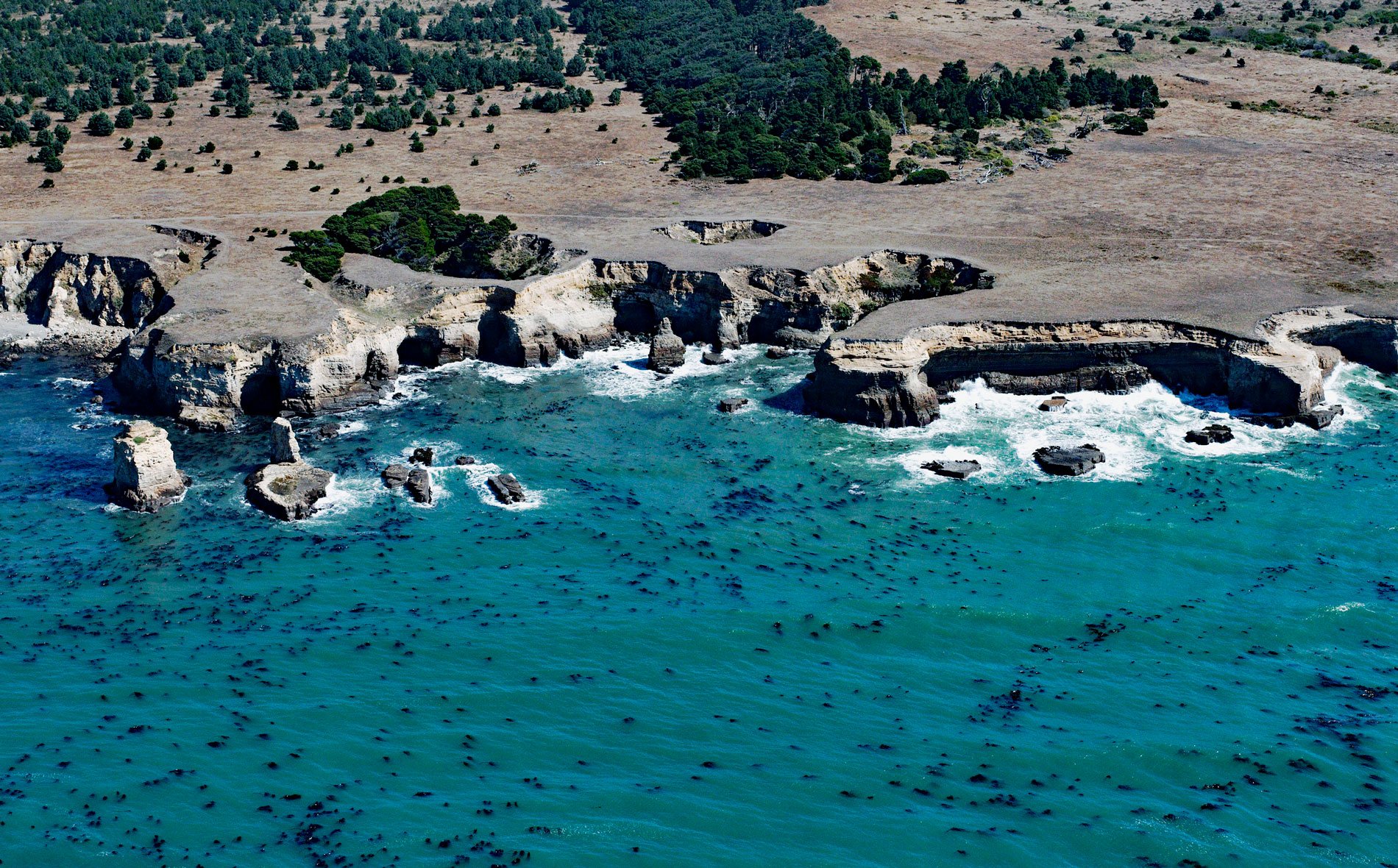Sea Lion Cove is on the Mendocino coast just south of Point Arena, about 16 miles (26 km) northwest of Gualala and 3 miles (4.8 km) southwest of Manchester, California. Sea Lion Cove is part of a marine protected area that covers 0.22 square miles (57 ha) of coastline. Numerous circular coves and sea caves occur on this coast and this may be the most extensive example of littoral pseudokarst topography on the Pacific coast.
Littoral pseudokarst is a product of marine erosion, and in many cases is characterized by the littoral sinkhole. This is an opening to the surface formed by collapse or gradual erosion into a sea cave chamber or passage. Unlike karst topography in soluble rocks, littoral sinkholes almost always form by erosion and collapse rather than dissolution. Littoral sinkholes are also known as “punchbowls” and “blowholes”, the latter term more properly applies to caves that eject spray with incoming waves, a phenomenon dependent on both tide level and swell conditions.
Sea Lion Cove State Marine Conservation Area is one of 22 marine protected areas adopted by the California Department of Fish and Game in August 2009, during the second phase of the Marine Life Protection Act Initiative. The initiative is a collaborative public process to create a statewide network of protected areas along California’s coastline. These marine protected areas were selected by local divers, fishermen, conservationists, and scientists who formed the North Central Coast Regional Stakeholder Group to preserve sensitive sea life and habitats while enhancing recreation, study, and education opportunities. Read more here and here. Explore more of Sea Lion Cove here:

